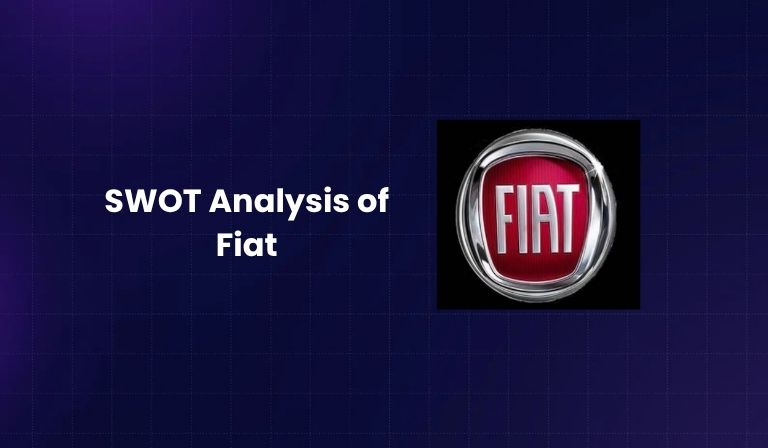Summary
Fiat, or Fabbrica Italiana Automobili Torino, is one of Italy’s most iconic automobile brands, founded in 1899 by Giovanni Agnelli. Over more than a century, Fiat has evolved from a local Italian carmaker to a global automobile player with a strong presence in Europe, Asia, and the Americas. Fiat’s merger with Chrysler to form Fiat Chrysler Automobiles (FCA) strengthened its international operations, giving it access to broader markets and technological resources. Conducting a SWOT analysis of Fiat allows us to examine the company’s strengths, weaknesses, opportunities, and threats, providing insights into its competitive position and growth potential. This analysis also highlights how Fiat can leverage its advantages, overcome challenges, and thrive in the global automobile industry.
Overview of Fiat
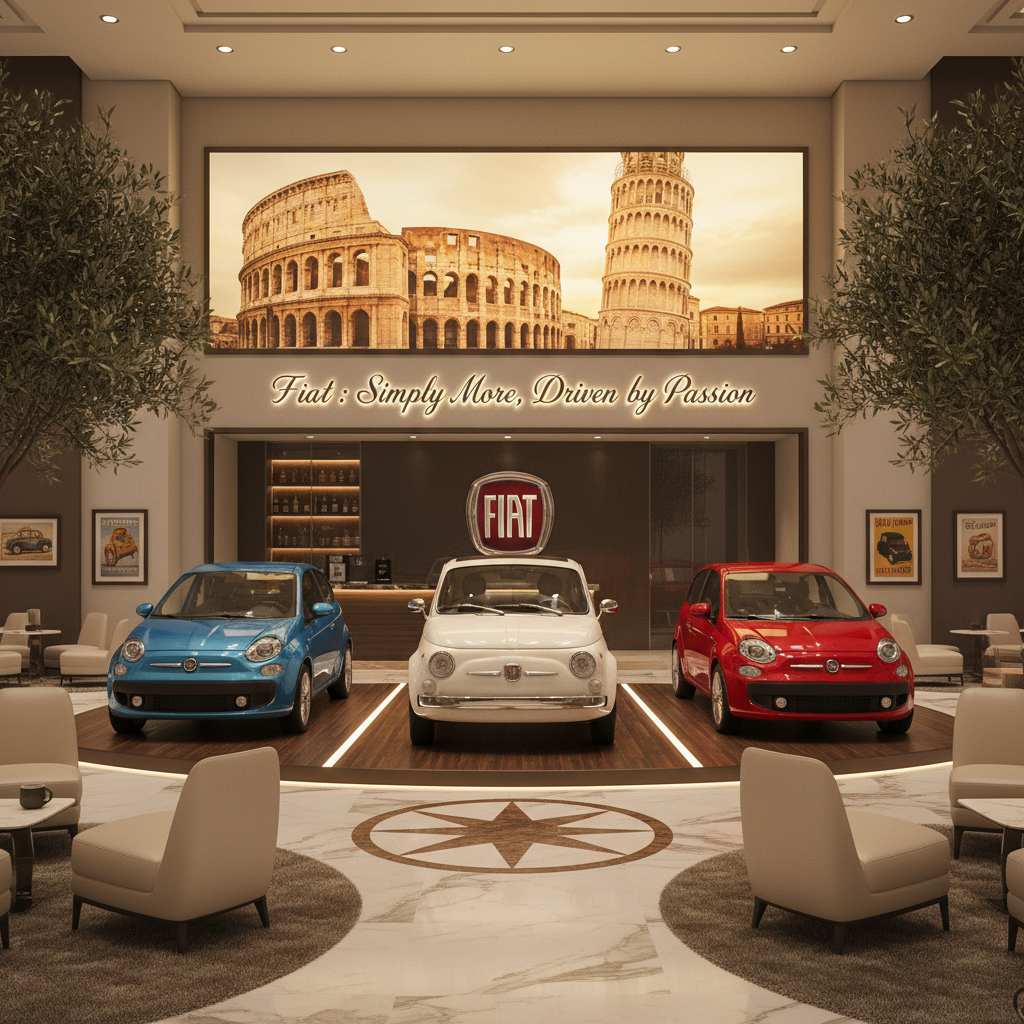
Fiat is a brand synonymous with Italian design, innovation, and heritage. It operates across multiple automobile segments, including hatchbacks, sedans, and SUVs, and is known for delivering stylish, functional, and feature-rich vehicles at competitive prices. Fiat targets young executives and urban families who value design, comfort, and efficiency.
The brand has strategically aligned itself with luxury and performance brands such as Ferrari, Maserati, and Alfa Romeo. This association not only enhances its market credibility but also influences Fiat’s product development and brand perception positively.
| Aspect | Details |
| Parent Company | Fiat Chrysler Automobiles (FCA) |
| Category | Hatchbacks, Sedans, SUVs |
| Sector | Automobiles |
| Tagline | Simply More; Driven by passion. FIAT |
| USP | Elegant design, affordable global luxury |
| Segmentation | Complete automobile segment including hatchbacks, sedans, SUVs |
| Target Market | Young executives, upper-middle income bracket |
| Positioning | Combines heritage with modern, feature-rich vehicles |
Fiat’s history of innovation, combined with strategic international partnerships, enables the brand to maintain a global footprint while keeping its Italian roots alive in design and engineering.
Strengths of Fiat
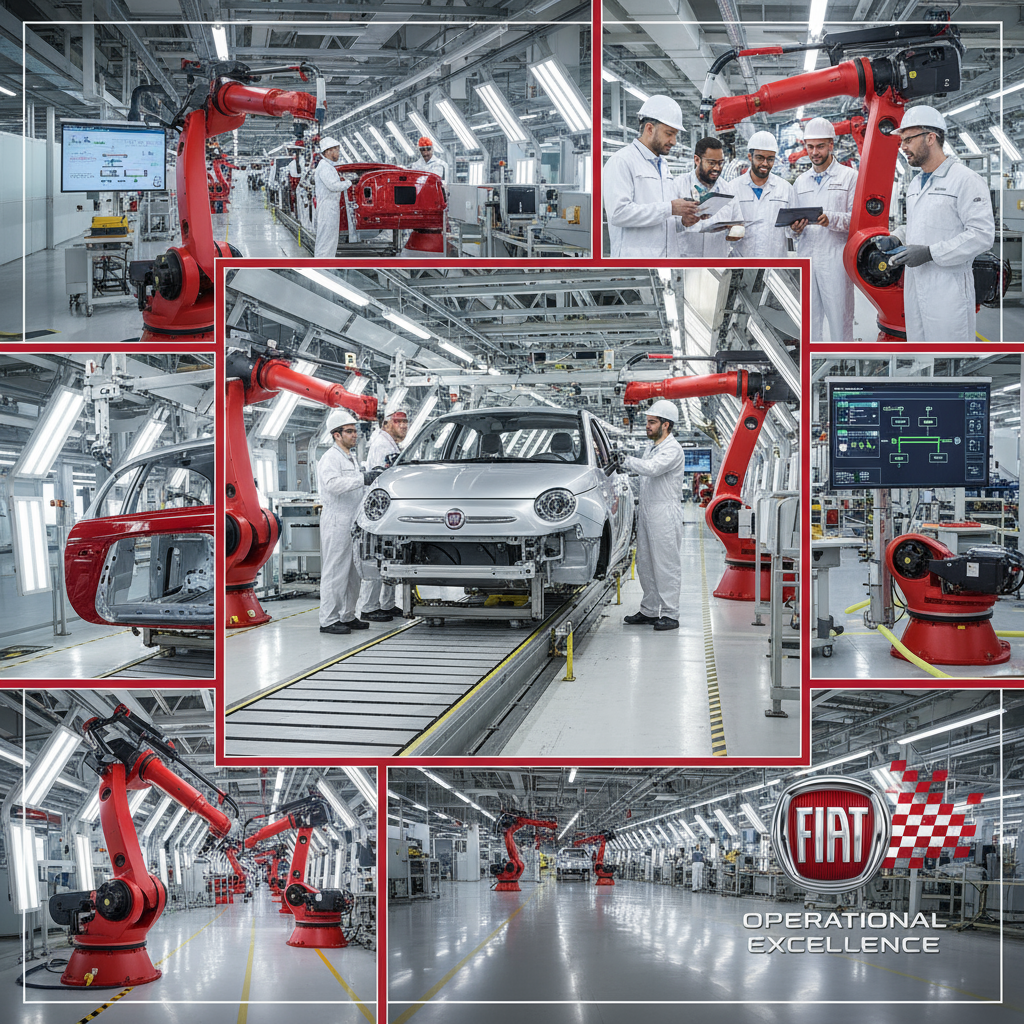
Strengths are internal factors that give Fiat a competitive edge. These are aspects of its operations, brand, and resources that help the company maintain its market position and attract customers.
Joint Ventures and Global Operations
Fiat has expanded through joint ventures in countries like Italy, France, Turkey, India, Pakistan, China, Serbia, and Russia. These partnerships allow Fiat to leverage local expertise, navigate regulatory environments, and optimize costs. For example, the joint venture with Tata Motors in India has helped Fiat reach a wider audience while adapting vehicles to local preferences.
Operational Excellence
Fiat employs over 130,000 people globally and produces around 2 million cars per year. The high production capacity ensures consistent supply to meet growing demand. Operational efficiency is achieved through modern manufacturing facilities and streamlined supply chain processes. This allows Fiat to balance cost, quality, and delivery timelines effectively.
Also Read: SWOT Analysis of General Motors
Strong Brand Associations
Fiat is associated with renowned luxury and high-performance brands such as Ferrari, Maserati, and Alfa Romeo. These associations enhance Fiat’s brand image, as customers often perceive Fiat vehicles as combining Italian design elegance with engineering reliability.
Strategic Mergers and Alliances
The merger with Chrysler formed Fiat Chrysler Automobiles (FCA), creating a diversified global automobile group. This merger expanded Fiat’s presence in North America and other international markets. Alliances like the one with Chery Motors in China help Fiat gain access to emerging markets with a rapidly growing middle-class consumer base.
Marketing and Advertising
Fiat uses a mix of digital, TV, and print advertising to reach its target audience. Campaigns often highlight design, efficiency, and urban lifestyle appeal, making Fiat particularly attractive to young professionals. For instance, the Fiat 500 marketing strategy emphasizes urban mobility, style, and affordability.
Product Portfolio
Fiat offers a wide range of vehicles, including the 500 series, Punto, Panda, and 500L. These vehicles are designed to meet diverse consumer needs, from compact city cars to family-oriented sedans and small SUVs. The range ensures Fiat can cater to multiple market segments.
Heritage and Repositioning
Fiat’s rich heritage enhances its brand credibility. It successfully combines tradition with innovation, such as in the 500 series, which merges classic design with modern technology. This strategy helps Fiat stay relevant in competitive markets while maintaining its identity.
Weaknesses of Fiat
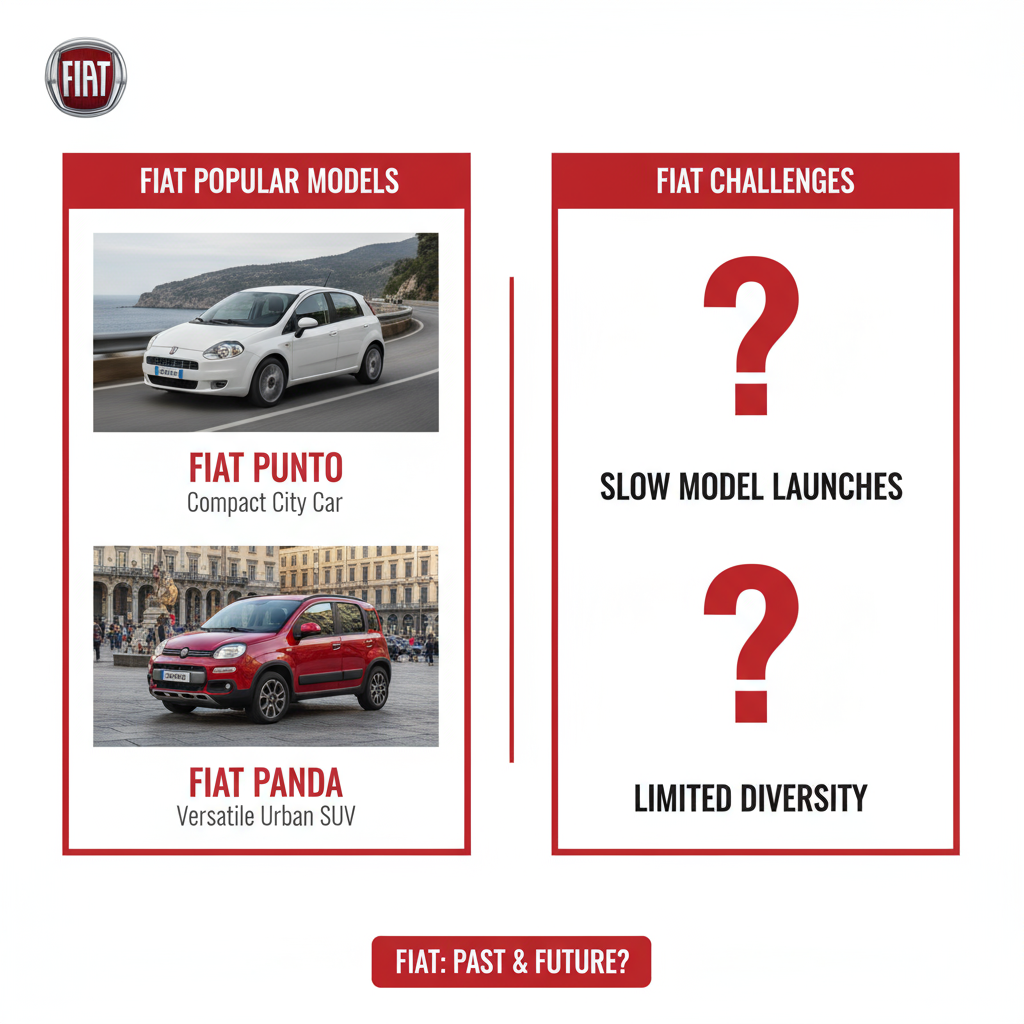
Description: Weaknesses are internal factors that hinder Fiat’s performance or limit its growth potential.
Limited Market Share
Fiat’s market share is smaller compared to global competitors like Toyota, Ford, and Volkswagen. This restricts its influence in international markets and limits economies of scale in certain regions.
Slow Vehicle Launches
Fiat releases fewer new models each year. Over the last 15 years, only four major launches have occurred. This limited refresh rate can cause Fiat to lag behind competitors in innovation and consumer engagement.
Dependence on Few Models
The success of models like Punto and Panda means Fiat relies heavily on a small number of vehicles. While these models are popular in Europe, over-reliance exposes Fiat to risk if consumer preferences shift or new competitors emerge.
Poor After-Sales Service
In many markets outside Italy, Fiat has limited service centers. Customers often face long wait times for repairs or maintenance, which can negatively impact brand loyalty and overall customer satisfaction.
Spare Parts Availability
Fiat struggles with the distribution of spare parts in some regions. This affects vehicle maintenance timelines and can deter potential buyers concerned about long-term support.
Weak Emerging Market Presence
Despite global operations, Fiat has not gained a strong foothold in several emerging markets, such as Southeast Asia, where competitors like Hyundai and Suzuki dominate.
Opportunities for Fiat
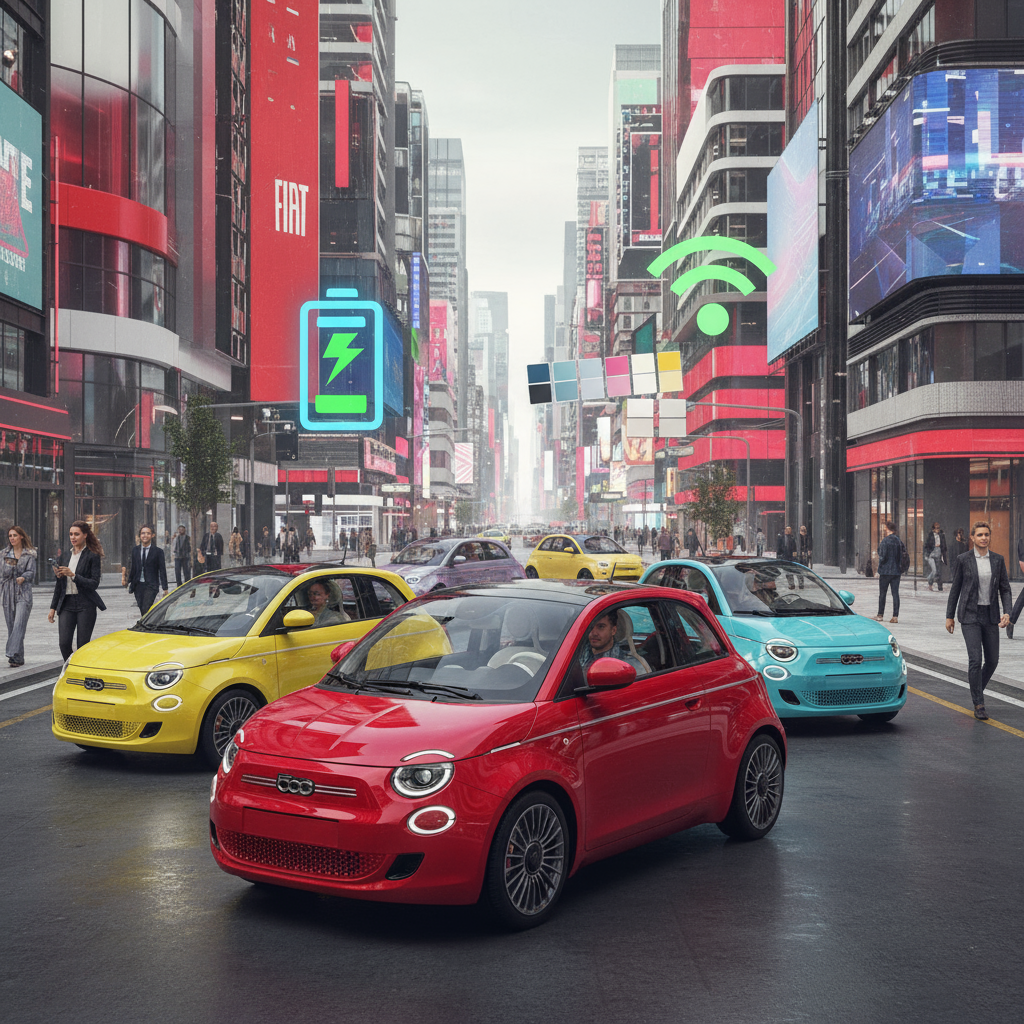
Opportunities are external factors that Fiat can leverage to achieve growth and improve market share.
Growing Demand for Passenger Vehicles
Urbanization and rising safety concerns with two-wheelers have increased demand for small cars, hatchbacks, and sedans. Fiat’s focus on compact urban vehicles positions it well to benefit from this trend.
Electric and Hybrid Vehicles
With governments worldwide encouraging low-emission vehicles, Fiat can expand its electric and hybrid portfolio. For example, the Fiat 500 Electric is an early step toward sustainable urban mobility.
Technological Advancements
Rapid developments in autonomous driving, connected car systems, and hybrid technology create opportunities for Fiat to innovate and stay competitive. Investing in research and development can help Fiat maintain a technological edge.
Personalization Trends
Consumers increasingly demand customized vehicles, from color options to interior features. Fiat can capitalize on this by offering modular and personalized vehicle configurations, especially targeting urban and tech-savvy buyers.
Emerging Market Expansion
Growing middle-class populations in India, China, and Brazil provide opportunities for market expansion. Fiat can leverage joint ventures, local production, and marketing campaigns to strengthen its position in these regions.
Brand Visibility Enhancement
Increasing digital marketing efforts, influencer partnerships, and experiential marketing can improve Fiat’s brand recognition. This is particularly crucial for younger demographics who rely on social media for brand discovery.
Threats to Fiat

Description: Threats are external factors that could negatively impact Fiat’s performance or growth prospects.
Intense Competition
Fiat faces fierce competition from global automakers such as Toyota, Ford, Honda, Hyundai, and Volkswagen. Price, features, and innovation determine market share, and competitors continuously invest in new technologies.
Rising Fuel Prices
Increasing fuel costs can reduce demand for traditional internal combustion vehicles. Consumers may shift toward more fuel-efficient, electric, or hybrid options, affecting Fiat’s sales of conventional models.
Economic Recession
Global or regional economic downturns can reduce disposable income, lowering demand for non-essential items like cars. Fiat’s sales in price-sensitive markets could be adversely affected.
Increasing Raw Material Costs
Fluctuating costs for steel, aluminum, and other components can increase production expenses. Fiat must manage costs efficiently to maintain pricing competitiveness.
Alternative Transportation Options
Public transportation systems, ride-sharing services, and urban mobility solutions can reduce demand for personal vehicles, particularly in congested cities.
Rapid Technological Changes
The fast pace of innovation in autonomous vehicles, hybrid engines, and connected car systems requires continuous investment. Failure to keep up may reduce Fiat’s market relevance.
Competitors of Fiat
Fiat faces competition from several global automobile brands. Understanding competitors is crucial for positioning and strategy.
| Competitor | Market Strength |
| Toyota | Strong global presence, hybrid expertise, high reliability |
| Ford | Wide range of vehicles, strong SUV and truck portfolio |
| Honda | Reliable and fuel-efficient compact and mid-size cars |
| Hyundai | Aggressive emerging market strategy, innovative features |
| Volkswagen | Premium vehicles, fuel-efficient models, global recognition |
Conclusion
Fiat’s SWOT analysis shows that the company has significant strengths, including global operations, strategic partnerships, and a diverse product portfolio. However, weaknesses like limited market share, slow new vehicle launches, and poor after-sales service require attention. Opportunities such as electric vehicles, emerging markets, and technological innovations can drive growth. Threats from competition, rising costs, and changing consumer preferences require proactive strategies. By leveraging strengths and opportunities while addressing weaknesses and mitigating threats, Fiat can strengthen its global market position and sustain long-term growth.
FAQs
What are Fiat’s main strengths?
Fiat’s strengths include global operations, joint ventures, strategic mergers, diverse product portfolio, and strong brand associations with luxury cars.
What are Fiat’s weaknesses?
Weaknesses include limited market share, reliance on few models, slow vehicle launches, poor after-sales service, and spare parts availability issues.
What opportunities can Fiat capitalize on?
Growing demand for passenger vehicles, electric and hybrid cars, personalization trends, technological advancements, and emerging market expansion.
What threats does Fiat face?
Intense competition, rising fuel costs, economic recessions, increasing raw material costs, alternative transport options, and rapid technological change.
How does Fiat compete globally?
Fiat competes through joint ventures, mergers, diverse products, digital marketing, brand associations, and adopting technological innovations in vehicles.
A digital marketer with a strong focus on SEO, content creation, and AI tools. Creates helpful, easy-to-understand content that connects with readers and ranks well on search engines. Loves using smart tools to save time, improve content quality, and grow online reach.

